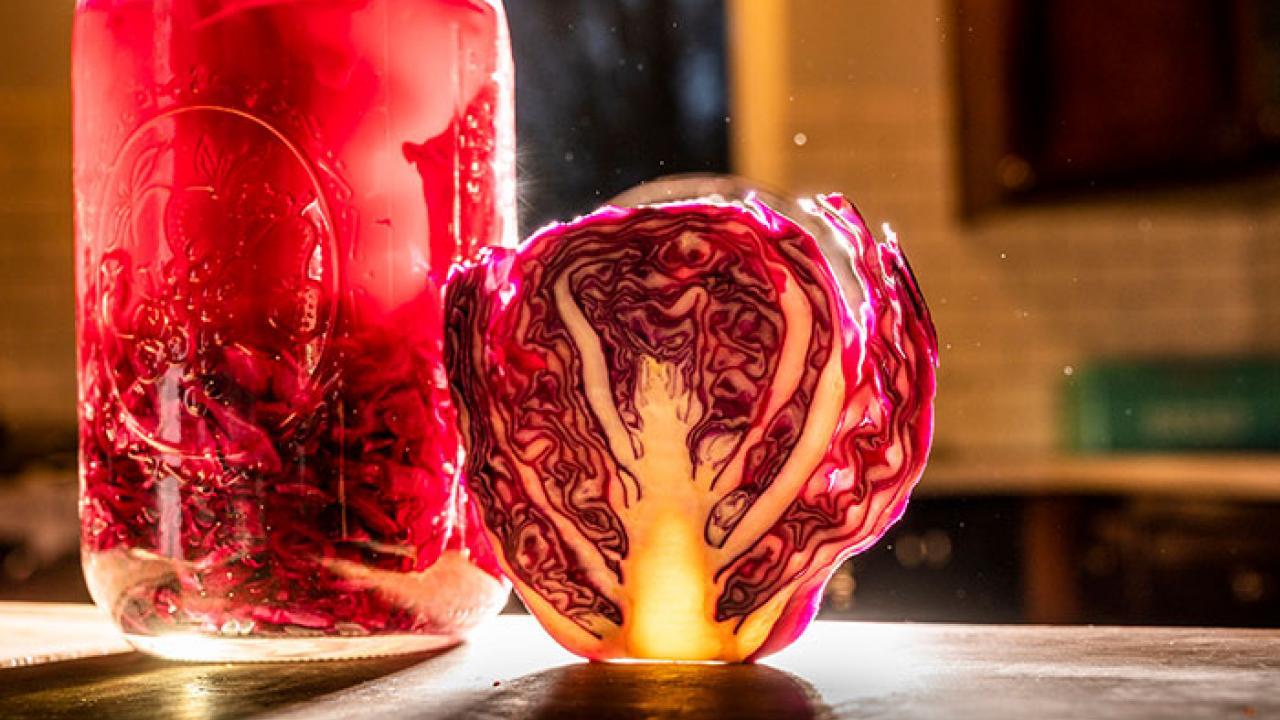
UC Davis Wants Samples of Your Fermented Foods for Science
Scientists Will Investigate Microbes in Fermented Fruits and Vegetables
It’s not always easy to find silver linings during the COVID-19 pandemic, but here’s one that food scientists at the University of California, Davis, have discovered: More people are exploring the ancient art of fermented foods.
“My mom made her first batch of sauerkraut this summer,” said Maria Marco, a microbiologist and food science professor with the UC Davis College of Agricultural and Environmental Sciences. “With so many of us sheltering-in-place, fermented foods are more popular than ever.”
Marco takes more than a culinary interest in America’s latest food trend. Marco and Erin DiCaprio, a food safety expert and Cooperative Extension specialist at UC Davis, are investigating the microbial mysteries of fermented fruits and vegetables to better understand the role fermentation can play in healthy diets.
And you can help.
“We’re calling on people from across the state to send us samples of their home ferments so we can characterize their microbial composition,” Marco said. “Citizen scientists can help us expand the body of knowledge about the nutritional content and beneficial bacteria in fermented fruits and vegetables.”
Marco, DiCaprio and their team of mostly undergraduate student scientists are looking for “fresh” ferments that are composed mainly of fruits and vegetables. By fresh, they mean samples taken right after fermentation, before refrigeration. They will be collecting samples for the next year. If you live in the Davis or Sacramento area, they can arrange to pick up your sample. If you live outside the area, or want to learn more, contact the team at EAT LAC (as in, lactic acid).
Managing microbes
Fermented foods and beverages are produced by nurturing conditions that discourage the growth of harmful bacteria and encourage the growth of beneficial microorganisms. Take sauerkraut, for example. When you combine cabbage, salt, time and the right temperatures, you can help friendly microbes flourish. As they do, they convert sugars in the cabbage into lactic acid and other compounds with tangy flavor that keep harmful bacteria at bay.
Similar chemistry is at work when producing a long list of fermented foods, such as yogurt, cheese, bread, alcohol, chocolate, coffee, salami, vinegar, kimchi, miso, tempeh and pozol.
Besides adding new flavors and textures, fermentation can extend the shelf life of food, improve our ability to absorb some nutrients and — perhaps — provide an environment for beneficial bacteria to thrive in our digestive systems and help prevent chronic disease.
“It’s quite possible that consuming fermented foods as part of a regular diet supports a healthy digestive tract and the microorganisms living in our intestine,” Marco said. “Our health may be helped by what those microbes eat, as well as by the nutrients they produce. Our goal is to provide solid evidence that can show whether fermented foods can, indeed, help fight disease. And if so, how.”
Tips for fermenting safely at home
What’s the best way to ferment fruits and vegetables at home? DiCaprio is working with the UC Master Food Preserver Program to provide online fermentation classes.
In the meantime, here are DiCaprio’s top tips:
- Follow a research-based recipe, like the ones you can find at UC Food Safety, the USDA Complete Guide to Canning and the National Center for Home Food Preservation. “Some of the resources available online and in print haven’t been vetted for safety,” DiCaprio said. “They might not have you add enough salt in the beginning, for example, which is important for keeping your product from spoiling.”
- Sanitation matters: Keep hands, equipment and the preparation area clean and sterile throughout the fermentation process.
- Control temperature: Don’t let your ingredients get too hot or too cold.
- Monitor the process to make sure it’s fermenting properly — that little bubbles are slowly rising to the surface, for example, and that mold isn’t growing throughout the container. “You can’t just set something on a counter and forget about it,” DiCaprio noted.
- Skim the scum. It’s common for a layer of yeast and mold to form atop your vegetable brine after a few days. DiCaprio recommends skimming it off each day.
“And be sure to start with good, fresh ingredients,” DiCaprio said. “We look forward to seeing the samples!”
Media Resources
- Diane Nelson, College of Agricultural and Environmental Sciences, 530-752-1969, denelson@ucdavis.edu
- Maria Marco, Food Science and Technology, 530-574-4893, mmarco@ucdavis.edu
- Erin DiCaprio, Food Science and Technology, 530-752-6594, eldicaprio@ucdavis.edu
- Amy Quinton, News and Media Relations, 530-752-9843, cell 530-601-8077, amquinton@ucdavis.edu
